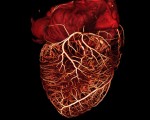Scientists find less damaging defibrillation method, heart tissue relieved

Good news, aging Earthlings: a team of researchers have found a way to shock a coding patient’s heart, while leaving other organs and tissues undamaged from the defibrillator . The device send a single high voltage pulse of electrical energy to a patient’s chest in order to fix an irregular or nonexistent heart beat; traditionally, what often results is damage to point of contact and surrounding skin cells, muscles and tissues, but a team of whiz kids have seemingly figured out a way to dodge the dreadfulness. Led by scientists Stefan Luther and Flavio Fenton, the team claims that by using a series of five pulses of less potent shocks (instead of a single concentrated charge), docs can see an 84 percent reduction in damaging power. This new technology — coined low-energy antifibrillation pacing (LEAP) — can also be used in implanted defibrillators, not just the well-known flappy paddles. Due to the relatively low emissions, both the patient and such implants have extended lives. And that, friends, is good for us all — given the impending Robot Apocalypse , we’ll be needing those extra years just to hold down the fort. Scientists find less damaging defibrillation method, heart tissue relieved originally appeared on Engadget on Sat, 16 Jul 2011 01:52:00 EDT. Please see our terms for use of feeds . Permalink


Posted by
on July 15, 2011. Filed under
News,
Tech.
You can follow any responses to this entry through the
RSS 2.0.
You can skip to the end and leave a response. Pinging is currently not allowed.

